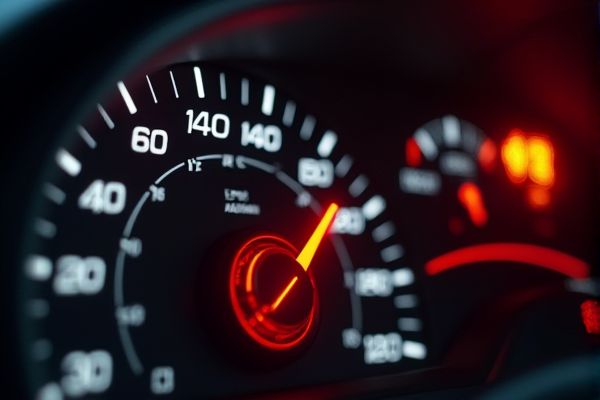
The Kia Ceed's check engine light indicates that the vehicle's onboard diagnostic system has detected an anomaly--commonly related to emissions, fuel system performance, or sensor functions--that could affect efficiency and reliability. Prompt diagnostic testing is essential to identify and resolve the issue, thereby preventing further damage and ensuring optimal engine performance and reduced repair costs.
Kia Ceed check engine light on meaning
Loose Gas Cap
A common issue causing the check engine light to illuminate due to improper sealing of the fuel system.
Damaged Spark Plugs
Faulty spark plugs can prevent the engine from starting properly and trigger the check engine light.
Faulty Catalytic Converter
A failing catalytic converter can lead to emissions issues and illuminate the check engine light.
Dirty or Faulty Mass Airflow Sensor (MAF)
A malfunctioning MAF sensor disrupts air-fuel mixture readings, causing the check engine light to appear.
Worn Ignition Coil
Ignition coils failing to deliver proper voltage can cause engine misfires and trigger the check engine light.
Vacuum Leak
Leaks in the vacuum system can lead to high RPMs and illuminate the check engine light.
Faulty Oxygen Sensor
A malfunctioning O2 sensor affects air-fuel mixture optimization and can cause the check engine light to turn on.
Transmission Issues
Problems with the transmission system can also trigger the check engine light.
For car users
When the Kia Ceed's check engine light turns on, immediately ensure the gas cap is tightly secured and check essential fluid levels like oil and coolant, as these simple steps can often resolve minor issues. Next, schedule a diagnostic scan with a trusted mechanic to retrieve error codes and accurately determine if further repairs are needed to prevent more severe damage.
Ignoring the check engine light
Ignoring the Kia Ceed check engine light can cause underlying issues--such as worsening sensor faults, increased emissions, and reduced fuel efficiency--to escalate into severe engine misfires and potential catalytic converter damage. Over time, these unresolved problems may lead to higher repair costs, compromised safety, and significant declines in overall vehicle performance as minor issues evolve into major faults.
How to reset?
Using an OBD-II scanner, connect to the Kia Ceed's diagnostic port, retrieve and document any error codes, then clear them to reset the check engine light immediately. Alternatively, disconnect the negative battery terminal for about 15 minutes to force a system reboot--however, ensure you diagnose and repair the underlying issue since the light may reappear if the root problem persists.
When a Kia Ceed's check engine light comes on, a basic OBD-II diagnostic typically costs about $50 to $100, while repair costs can range from approximately $150 for minor fixes (like a loose gas cap or sensor issues) up to $1,000 or more for major component failures. Prioritizing this diagnostic data ensures that the specific cause--whether it's an oxygen sensor malfunction, catalytic converter issue, or another engine fault--is accurately identified, enabling a targeted repair approach that aligns with your vehicle's specific needs.
Future prevention
Perform regular maintenance by adhering to the manufacturer's service intervals, which include using high-quality fuel, checking sensor functionality (such as the oxygen and mass airflow sensors), and conducting routine diagnostic scans to detect early warning signs before they trigger the check engine light. Additionally, address minor issues promptly, maintain proper oil changes, and ensure the emissions system is well-maintained to optimize engine performance and prevent costly repairs on your Kia Ceed.
